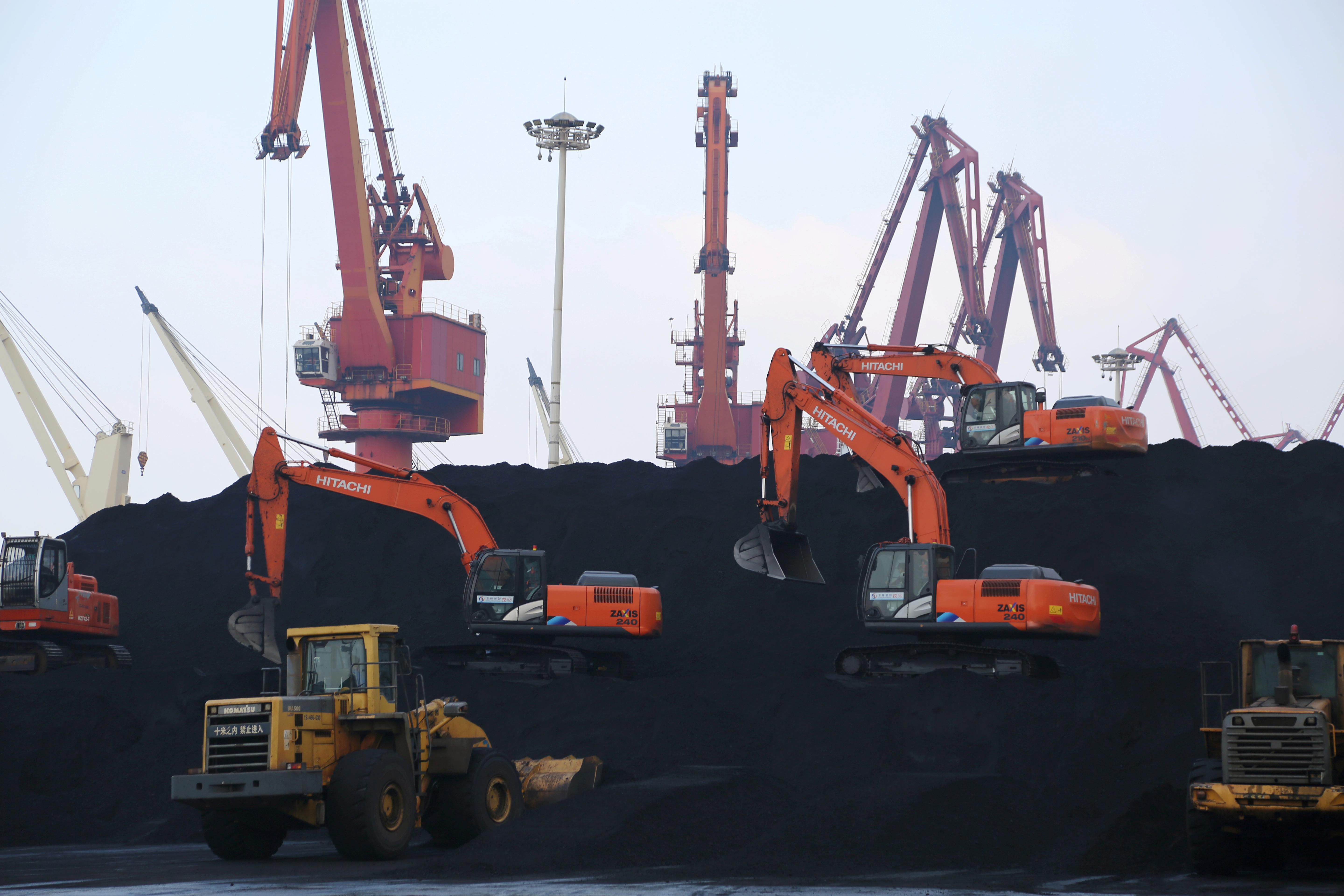(ATF) China’s bid to cut its reliance on coal for power generation and switch to renewable energy sources has been hampered by partly by the resurgence of the country’s manufacturing sector, as well as its harsh winter and tensions with some of its trading partners.
A senior official from the central bank said on Tuesday December 22 they hope the financial system can help develop ‘green power’ sources.
Ji Min, director of the Counsellor Office at the People’s Bank of China, wrote an article that said the country needed to develop green finance to meet the needs of energy resource transformation and development.
China is highly dependent on imports of energy and resources, and the proportion of carbon-intensive industries is significant. Currently, it is seriously affected on two fronts – it is refusing to accept thermal coal from Australia (with many ships moored or held up off the east coast for months) in an apparent attempt to intimidate that country, for its demand that the origin of the Covid-19 pandemic be investigated, plus other bilateral tensions.
And, to the north, Russia has trimmed coal supplies, with no stated reason. However, China’s “wolf warrior” attitude toward Russia’s Far East, which some pundits have claimed as Chinese territory in previous eras, has caused concern.
These two factors means China is suffering rolling power cuts and industrial production has been affected in various areas.
Ji Min sees a solution in “green development”, which he said was not only the icing on the cake to meet people’s yearning for a better life, but also an important guarantee for energy resources and industrial safety. A few weeks ago, China announced that it would aim to achieve peak carbon emissions in 2030 before its goal of being carbon neutral in 2060.
Jin said the task of green reform in key areas and the development of renewable and clean energy was urgent and would be arduous. But he said the country needs to speed up improvement in standards and institutional mechanisms to develop green finance, and increase its commitment to new energy, with financial support for industries that use energy efficiently.
To achieve this “green dream”, Jin said they hoped to develop high-quality capital markets. He saw implementation of the new securities law as an opportunity to set up a sophisticated market system with incentives that would push investment toward renewable energy solutions.
Renewable energy project in Erdos
There was also positive news this week, with China Energy Engineering Group (Energy China) signing a framework agreement with Erdos city government in Inner Mongolia to set up an integrated energy base with total investment of 23.8 billion yuan ($3.63 billion), Reuters reported.
The project will add 1 gigawatt (GW) of wind power generation capacity and 5 GW solar capacity on top of the already planned 8 GW coal-fired power plants in Erdos, according to a statement issued by the state asset watchdog, SASAC, on Monday.
Energy China also plans to build electricity storage facilities to go alongside with the integrated energy project, the SASAC statement said. “Once launched, the integrated energy project will generate around 33 billion kilowatts-hours electricity each year, among which more than 41% is expected to come from renewable sources.”
Amid the renewable energy boom and insufficient power carrying capacity from grids, China is encouraging energy companies and local government to add power storage facilities when building new solar and wind power projects in order to improve the stability and flexibility of the power grid.
Chinese President Xi Jinping announced at a United Nation summit earlier this month that China will boost its installed capacity of wind and solar power to more than 1,200 GW by 2030, and increase the share of non-fossil fuels in primary energy consumption to around 25% during the same period.
In November, Energy China signed a framework agreement with Chongzuo city government in the Guangxi southern region to invest 82 billion yuan in a mega-sized city development project, including energy, transportation and mines restoration.
Harsh winter, industry surge complicating power change
China’s harsh winter and manufacturing recovery this year have pushed up electricity demand across the country’s industrial belt, complicating Beijing’s drive to cut businesses’ power usage and their reliance on polluting coal-fired energy.
The surge in demand comes as the cold hampers the ability of renewable energy to fill the gap left by a severe coal shortage, raising doubts about the reliability of cleaner sources to power the world’s second-largest economy during critical periods.

A man rides a bicycle on a street with the lighting system partially off in Yiwu in Zhejiang province on December 22, 2020. Photo: Aly Song/ Reuters.
In Zhejiang province, an economic powerhouse in the country’s east, officials in cities such as Wenzhou and Yiwu told factories to scale back production and government departments were told not to turn on heat unless temperatures fall below 3 Celsius.
“We’re already running late in fulfilling our orders and now the government wants us to shut down for one day every three days. This is not helping at all,” a factory owner in Yiwu said, but he declined to be named due to the sensitivity of the matter.
Meanwhile, the southern provinces of Hunan and Jiangxi also imposed curbs on factory and residential power usage.
Power consumption rose 9% across China in November from 2019, with industrial demand up 10%, fuelled by a resurgent economy and a 21% increase in exports to meet Covid-driven demand for electronics, protective gear and other goods. The strong recovery is boosting demand for power at a time when coal supplies are tight.
The municipality of Jinhua, which includes Yiwu, missed its energy efficiency targets during the first three quarters of this year and all of last year, according to its statistics bureau, and the rationing is part of efforts to meet targets.
At the Heart of Yiwu Mall, lights, escalators and heating were shut off, store workers said. While the lights and escalators were restarted this week, the heat was not, forcing shop staff to rug up in winter coats. The restrictions came into force on December 13, and two Yiwu factory owners said they were told it would last until the end of the year.
To address local power shortages, Beijing has urged coal miners to ramp up output and energy firms to diversify gas sources. It has also allowed customs to clear some imported coal that had built up at ports during the summer due to unofficial quotas aimed at supporting local producers.
While Australian coal has reportedly been excluded from customs clearances, it accounts for less than 3% of China’s total thermal coal usage. Daily coal use at major coal-fired plants in eight coastal provinces in eastern China was up 20% annually last week, according to China-based CCTD consultancy.
Coal inventories at those utilities were at 87% of 2019 levels. China’s general coal inventory at major power plants in coastal regions could support consumption for 23 days, state TV reported this week.
King coal
Coal still dominates Chinese power generation, accounting for nearly 60% of supply.
Despite efforts to switch to cleaner energy, China’s power grid remains largely reliant on coal to meet base-load demand, especially during the cold season when there is less hydropower and power supplies typically tighten.
“With the more ambitious renewables push, China will find its grid system facing bigger challenges to ensure firm capacity during peak times,” said Lara Dong, senior power director at IHS Markit in Beijing.
In the southern provinces of Jiangxi and Hunan, which rely heavily on hydro and renewables, demand this season overwhelmed supply, with coal plants unable to fill the gap after local miners were shut due to environmental and safety reasons and national curbs on output earlier this year, crimping supply.
In Hunan, wind turbines were frozen by an early cold snap this month that brought ice and snow.
In August, Beijing rolled out a draft plan to encourage power producers to add storage facilities and better integrate their use of coal and other sources to ensure stability and flexibility of the grid.
with reporting by Reuters
























